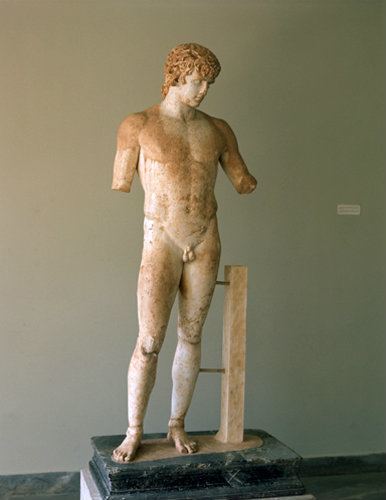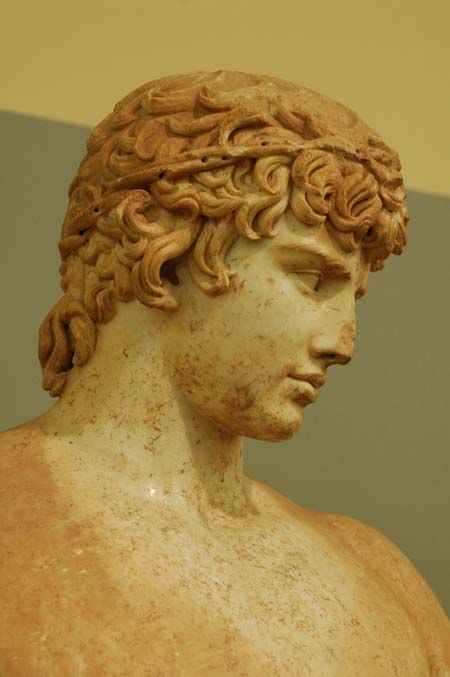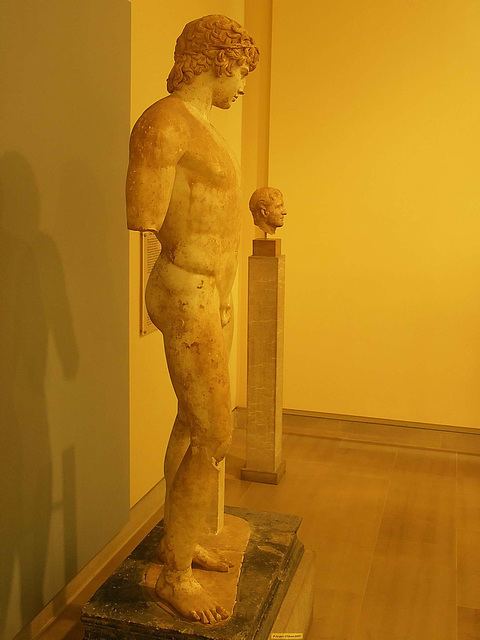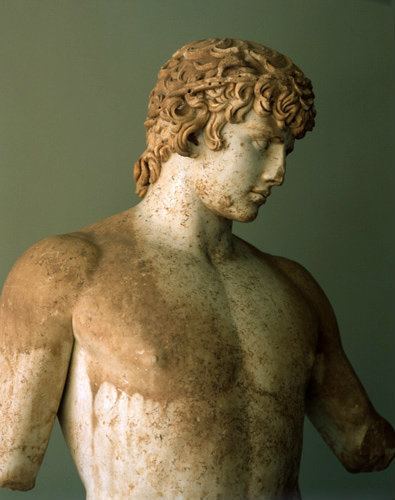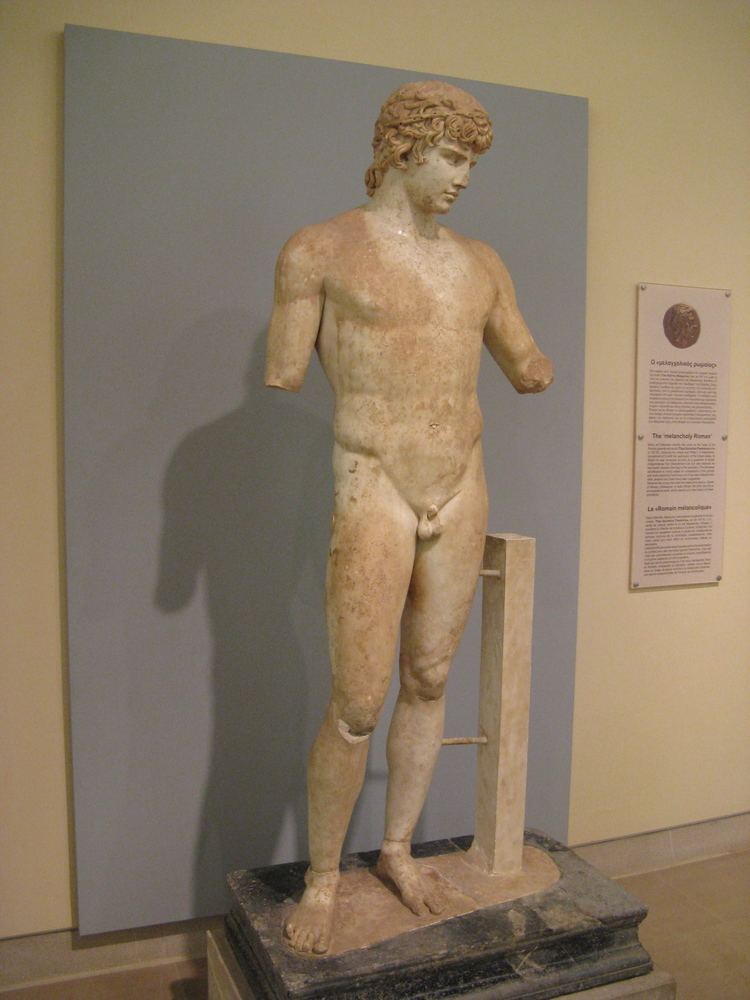Year c 130 AD | ||
 | ||
Similar | ||
The Statue of Antinous at Delphi is an ancient statue that was found in Delphi during excavation.
Antinous was a young Greek of extraordinary beauty from Bithynia, who became the beloved companion or lover of the Roman emperor Hadrian but later died in Nile under mysterious circumstances.
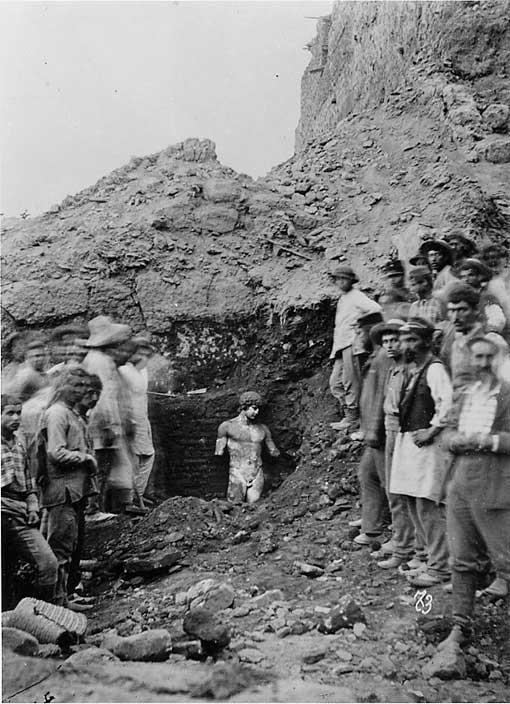
Dismayed by the death of Antinous, Hadrian, who happened to be an admirer and a passionate supporter of classical Greek Antiquity, as well as a benefactor of the Oracle of Delphi, ordered that statues of the beautiful young man, whom he had loved so passionately, be erected in all sanctuaries and cities of his vast empire. Furthermore, he ordered the institution and establishment of Games in honor of Antinous, who since then was honored and worshiped as a god.

Thus, a statue of Antinous was erected within the sanctuary of Delphi, after his death, in 130 A.D. and it was one of the most beautiful and impressive cult statues. During the excavations, the statue was discovered upright on its pedestal, next to the wall of a brick chamber, alongside the holy Temple. From the Roman coins minted to honor Αntinous, we are informed that the representation of the statue was accompanied by the epithet "Propylaeus". So, it is legitimate to assume that it was originally placed at the entrance of the sanctuary. Later on, it suffered damages and broke at the height of the knee, so it had to be moved closer to the temple of Apollo, in a sort of chapel, where it was found during excavations, in relatively good condition. Its idealized characteristics as well as the intense polishing of its marble surface with a special oil (which helped it survive gleaming and in excellent condition), is indicative of the time of Hadrian.
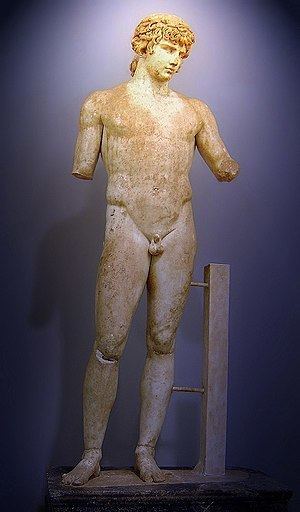
If we take a closer look at the statue, we see that the head of young Antinous is tilted to the side like he is in a state of reflection. Around its thick and masterfully carved hair, which surround its face and fall on its forehead and cheeks, thus adding a mournful quality to its beautiful, full of vain youthful figure, we can see several holes that were used to attach a bronze laurel wreath. His body is carved in a way that gives it that beautiful nudity which characterized the statues of gods and heroes of classical antiquity. However, the nostalgic Hadrian classicism is not enough for the statue to stand worthy of the art of its genuine classic models.
